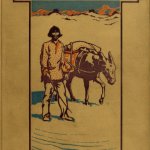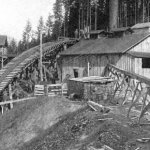The Mystic Mid-Region: The Deserts of the Southwest
Posted in Culture, Lower Elementary, Nature Studies, Public Domain, Upper Elementary on September 25, 2013

Learn about the deserts of the Southwest USA! Between the lofty ranges of mountains which mark the western boundary of the great Mississippi Valley and the chain of peaks known as the Coast Range, whose western sunny slopes look out over the waters of the placid Pacific, lies a vast stretch of country once known Read More »
Wildflowers of the Farm
Posted in Lower Elementary, Nature Studies, Plants, Public Domain, Upper Elementary on September 11, 2013

Almost all plants, including large trees, have flowers–they are flowering plants. Just a few plants have no flower; ferns have none, nor have the mosses and lichens which grow on walls and rocks and on the stems of trees. Fungi, too, such as the mushroom, have no flowers. Nearly all other plants have flowers. It Read More »
Microscopes – History, Use, and Lessons
Posted in Public Domain, Science on August 22, 2013

Microscope, the name of an instrument for enabling the eye to see distinctly objects which are placed at a very short distance from it, or to see magnified images of small objects, and therefore to see smaller objects than would otherwise be visible. The name is derived from the two Greek words, expressing this property, Read More »
A Selection of Science Readers
Posted in Public Domain, Science on August 22, 2013
Old science readers can be fun to read and look at. They are not usually up to date on many topics, but with careful research and supplementation they can make a fine addition to a study of science. One way we use public domain science readers is by looking at their illustrations and discussing how Read More »
Diggers In The Earth
Posted in Elementary, Public Domain, Technology on August 8, 2013

When a child can look at a steel pen not simply as an article furnished by the city for his use, but rather as the result of many interesting processes, he has made a distinct growth in intelligence. When he has begun to apprehend the fruitfulness of the earth, both above ground and below, and Read More »






